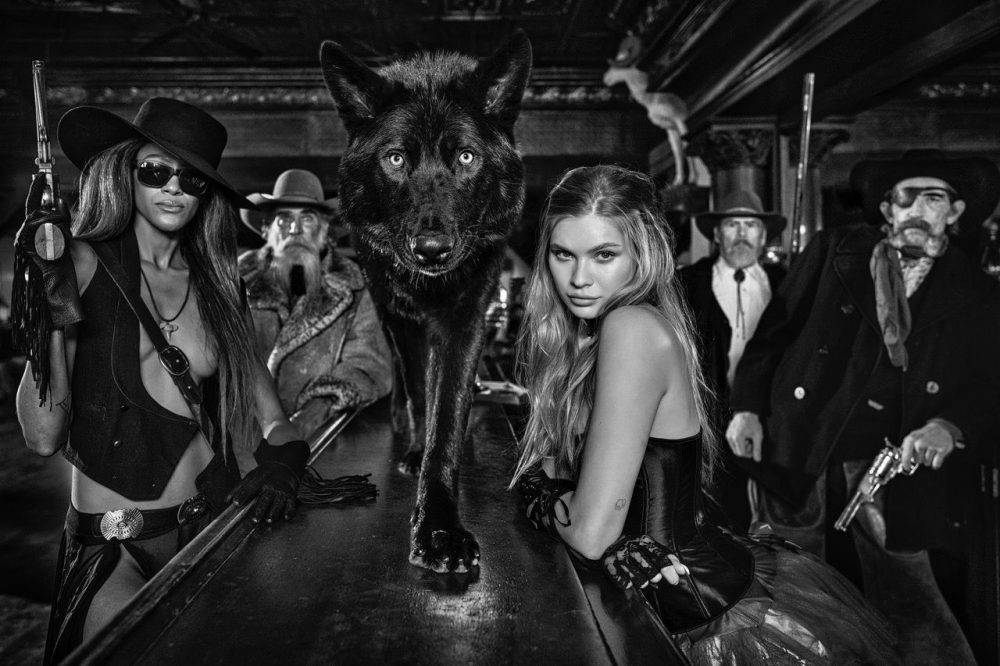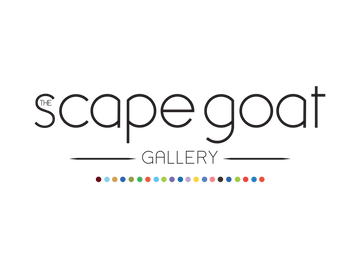David Yarrow: Stars, wildlife, supermodels …

British photographer David Yarrow is a storyteller by nature — and it’s his day job. He is in South Africa for the opening of his exhibition this week at the Scapegoat Gallery in Johannesburg which, rather appropriately, is called Storytelling.
Dressed in grey sweatpants and a hoodie, the tanned Yarrow has just arrived in the ultramodern gallery, which is all monochrome; strictly black and white.
Someone else in such casuals would have looked out of place in this posh hangout in chi-chi Hyde Park Corner but the world-renowned photographer has the easy charm of someone who has taken the pictures of some of the world’s most famous people. Because he has.
Paris, Cindy, Naomi, Cara and Leonardo — to him. Hilton, Crawford, Campbell, Delevingne and DiCaprio — to us ordinary folks. And that’s just some of them.
We are sitting at the entrance to the gallery, where the preparations for the opening are largely finished. His large, gripping works grace the white walls.
Born in Glasgow, Scotland, in 1966, Yarrow took up photography at an early age. It was an icon for the ages that got him into photography, the way he is doing it now, in the first place — Diego Maradona, a man revered as one of the best footballers ever, if not the best.
He remembers that day, Sunday, 29 June 1986, in Mexico City’s Estadio Azteca like it was yesterday. It was the World Cup Final. Argentina’s 25-year-old captain, Maradona, played a large role in his team’s 3-2 victory over Germany.
Yarrow smiles as he recollects his own moment of glory in the chaos after the trophy presentation, when 5 000 Argentinian fans ran wild among the players and the press representatives.
“Maradona, riding high on Argentinian shoulders, looked straight at me — arms aloft with the trophy in his right hand.
“Little did I know, then as a 20-year-old, that I had a photograph that would stand the test of time,” Yarrow reminisces.
“It captures a historic moment in time and Diego Maradona will always be an iconic figure in the history of the beautiful game.”
The immediately likeable Yarrow is also a conservationist and author. He has stories to tell, not only about celebrities, but also about the natural world. That is a large part of his fame — spectacular pictures of animals in the shrinking wild spaces of the world.
Yarrow’s photographic subjects include supermodels, sports stars, actors, wildlife, indigenous communities and landscapes.
But what triggered it, what set him off on his career?
“I was 16 or 17, when I saw a picture coming through in the darkroom, through the developer on the tray,” he says.
“That was what gave me some sort of visceral emotion, which I could not really articulate such as story sensation, seeing a picture appear out of liquid,” Yarrow says.
He tells of the first picture he took in South Africa, which has special significance for him.
“I took a picture of a shark in South Africa in 2010, near Cape Town. And that was emotional.”
Yarrow says he does not think photography, as such, is art but believes that the authenticity in photography is what makes it art.
“The key to artists is authenticity. And I like to think a lot of these pictures have already been taken before. So, to me, it is about trying to be authentic, trying to be different.
“I think a lot of photography is not art because it is too literal. Art should be interpretive, it should be something that you can look at in different ways. And I think it is not for the photographers to say it is art.”
Yarrow says if a photographer can take a picture that tells a story and which allows someone else to finish it, then it can be permitted to be art.
“I’m a storyteller. And I do not want to be showing too much stuff that is too honest. I want to leave it up to the viewer to look at.
“I think if you are not authentic, if it is not original, it is bad art. If someone tries to photograph and paint the Mona Lisa in a way that was done 400 years ago, I think that is bad art.”
It helps that people who matter think Yarrow makes good art.
“It is for galleries and collectors and dealers to say, I cannot turn around and tell you, but I guess we have 50 galleries and art galleries around the world. So, we must be doing something right.”
Yarrow believes photography is about emotion, something that is going to grab the attention of someone looking at that image and hold their attention.
“It is harder and harder, now in 2023 to do that, but I think photography is about emotion. Luck is a large part of capturing that emotion.
“We, as humans, tend to attribute bad things that happen to us to bad luck and good things that happen to us to skill. But, actually, it is a combination of the two.”
He says he is excited to be exhibiting in South Africa because he has photographed and told a lot of stories about the country.
“This is a big country. It’s got a storied past.
“You know, even with the rand being under pressure, there are still art collectors here.
“I took a lot of photographs here and I have got a lot of friends in the community. I know Johannesburg, well, Cape Town well, so if we can show in smaller places in Europe, we can show in Johannesburg.
“And it is lovely to come here and relax and stay at a nice hotel and see friends. This gallery [Scapegoat] does a good job,” he says.
Yarrow is super-diplomatic about his subjects but, after prompting, he says the most difficult person he has worked with was the American tennis player John McEnroe, who was as well-known for his volatility as his shot-making and volleying skills.
He laughs: “I can tell you what I really think but the person that perhaps was someone that I had to work out to make him believe in me a little bit was John McEnroe… an uncompromising guy, just quite demanding and he expects a lot of other people. But then we got it and I have huge respect for him.”
He says he really enjoyed working with American model, actress and television personality Cindy Crawford.
“She is the best, the easiest. She is a professional, a total professional.”
He says Paris Hilton was very demanding. “But she has earned the right to be demanding. And I respect her. There is no one I do not respect. But some people are easier to get to know quicker than others.”
Recently, another star, not only on the sports field, but also in front of the camera, he took pictures of was Norwegian footballer Erling Haaland, who was “nice to photograph”.
Yarrow says one of his regrets is that “I never photographed the ‘bad guys’, like Vladimir Putin”.
“I never photographed Putin and the supreme leader of North Korea, Kim Jong Un. I tried to photograph him and did not achieve that.”
On his “nice guy” wishlist of photographic subjects is the country singer Willie Nelson.
“Why? Because he is an American icon, an amazing singer.”
About the age of smartphones, Yarrow says: “You have to address that and be very conscious of the fact that everyone is a photographer.
“So, for you to raise the bar and transcend becomes harder and harder,” he says.
“Everyone around the world takes a better picture than me every day.
“So, it is very humbling, but it keeps you on your toes.”
Storytelling, his first show in South Africa, is a curated collection of his most powerful recent images. It incorporates all his major preoccupations: people, animals, nature and storytelling.
Owner of the Scapegoat Gallery Darren Neofytou says: “We exhibit art that examines the ubiquitous popular culture of the day, and we believe that the art of David Yarrow does all this and more.”

